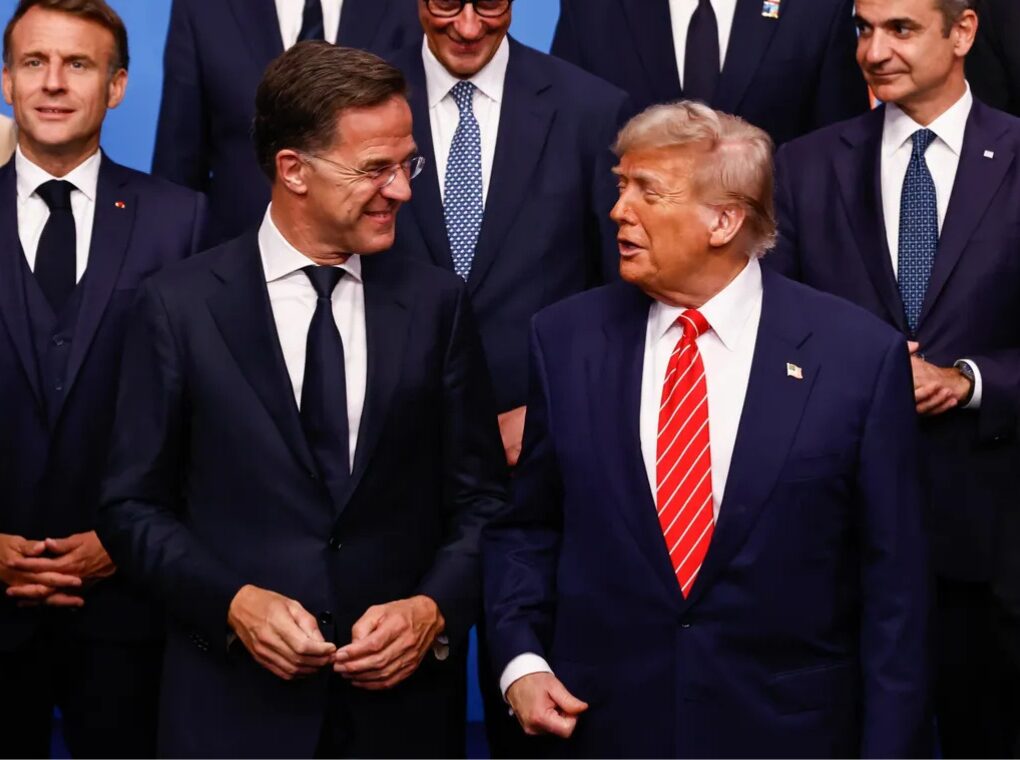The recent NATO summit held in The Hague marked a pivotal moment for the transatlantic alliance, as leaders from 32 member states gathered under a renewed climate of diplomacy and political caution. At the heart of the summit’s delicate choreography was US President Donald Trump, whose “America First” foreign policy and past criticism of NATO posed both a challenge and a central focus for the gathering. Although the summit avoided major disruptions and delivered some headline outcomes—most notably a historic pledge to increase defense spending to 5% of GDP—key strategic questions remain unanswered.
Flattery as Strategy: Diplomatic Calculations
The summit was meticulously designed to accommodate Trump’s political style and reinforce his engagement with the alliance. NATO Secretary General Mark Rutte, a seasoned diplomat and former Dutch prime minister, orchestrated a tightly scripted event focused on optics and symbolism over confrontation. From lavish royal hospitality at the Huis ten Bosch palace to public praise from fellow leaders, the tone was one of deference and alignment.
This charm offensive appeared to pay off. Trump offered a clear endorsement of NATO’s Article 5 collective defense clause, dispelling fears—at least temporarily—that the US might formally distance itself from the alliance. “I stand with it, that’s why I’m here,” Trump told reporters. His comment, although hedged by earlier ambiguity, was seen by many as a necessary reaffirmation of NATO’s core principle.
Nevertheless, the focus on diplomatic appeasement came at a cost. Discussions on pressing security issues such as the ongoing war in Ukraine, future NATO enlargement, and long-term strategic posture toward Russia and China were notably downplayed or sidelined. The final communiqué was a terse five-paragraph document—significantly shorter and less specific than in previous years.
The 5% Pledge: A Strategic or Political Win?
One of the summit’s key deliverables was the unprecedented agreement by member states to increase defense spending to 5% of GDP. This move, long championed by Trump, marks a major escalation from the 2% target agreed to at the 2014 Wales summit.
In strategic terms, this commitment signals a renewed emphasis on collective defense and deterrence capabilities. With Russia continuing its war against Ukraine and expanding its defense industrial output—reportedly producing 1,500 tanks and 3,000 armored vehicles this year alone—NATO members have acknowledged the urgent need for increased investment in both traditional military assets and emerging technologies.
However, economic realities may complicate implementation. Many European countries, including Spain, expressed reservations about the feasibility of meeting such a demanding target. For now, these concerns have been deferred, but the alliance will need to reconcile ambition with capacity in the months ahead.
Ukraine and Russia: The Unspoken Rift
Despite the ongoing war in Ukraine, the summit offered little in the way of substantive support or political assurance for Kyiv. Ukrainian President Volodymyr Zelensky was invited only to a pre-summit dinner and a side meeting with Trump, rather than the main summit itself. The final declaration made no explicit mention of Ukraine’s eventual NATO membership, nor did it reaffirm earlier pledges of solidarity.
This reticence reflects ongoing divisions within NATO about how to approach the Russia-Ukraine conflict, particularly under the current US administration. While European members remain broadly aligned on maintaining military and political support for Ukraine, Trump has advocated a more conciliatory approach toward Moscow, raising fears among allies that the US could shift its position in any future peace negotiations.
Several former officials voiced concerns. Julianne Smith, former US ambassador to NATO, warned that “a NATO summit that essentially ignores the war that is still raging in Ukraine should worry all of us.” Others suggested that the summit missed an opportunity to send a unified strategic message to Russia.
Structural Readiness and Industrial Capacity
Beyond spending targets, the summit also outlined plans for a broader overhaul of NATO’s military posture. According to internal documents and defense ministers’ agreements, NATO aims to drastically increase its air and missile defense capabilities, armored vehicle fleets, and munitions stockpiles. A renewed focus on enabling infrastructure—such as logistics, transportation, and military mobility—was emphasized as crucial to ensuring operational readiness.
Also read: Can NATO Afford to Let Spain opt Out of Its New Defense Strategy?
Furthermore, the alliance pledged to expand investments in cyber defense, space operations, and innovation through initiatives such as Task Force X Baltic, which focuses on AI integration in naval operations and undersea security. These steps represent a deliberate effort to prepare for the evolving nature of warfare, as illustrated by Ukraine’s innovative use of low-cost drones to neutralize high-value Russian military assets.
Peace Through Strength—or Papered-Over Differences?
The summit’s underlying message was one of unity and renewed purpose: a stronger, fairer, and more lethal NATO ready to confront growing threats from Russia, China, North Korea, and Iran. Yet beneath the surface, unresolved tensions persist. The alliance has avoided a public crisis, but it has not resolved fundamental disagreements on strategic direction, particularly regarding the future of Ukraine, relations with Russia, and the balance of responsibilities between the US and its European allies.
NATO has entered a period of transition. It remains to be seen whether the summit’s diplomatic success will translate into sustained policy coherence and military effectiveness. With defense reviews underway in Washington and growing expectations for European autonomy in security matters, the alliance must soon move beyond symbolism and address the hard questions left unanswered in The Hague.
As Churchill warned in 1936, nations must choose between timely preparation and regrettable delay. For NATO, the summit in The Hague may prove to be a turning point—or merely a pause in a growing transatlantic divergence.
